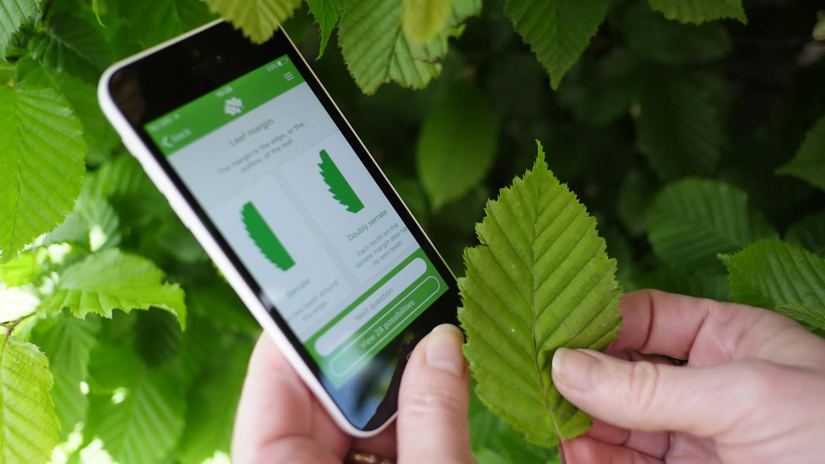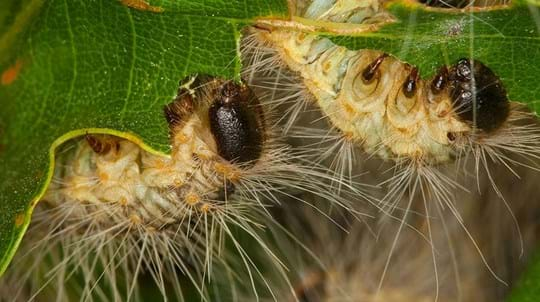
Credit: STUDIO75 / Alamy Stock Photo
Leaves
Pinnate and larger than that of the common walnut (Juglans regia) with more leaflets. Individual leaflets are oval, pointed, irregularly toothed and hairy underneath.
A handsome healer, the black walnut is both ornamental and medicinally valuable. It’s a favourite with squirrels, and its timber is extra pricey.
Common name: black walnut
Scientific name: Juglans nigra
Family: Juglandaceae
Origin: non-native
Black walnut is a large, broadleaf tree which can reach 30–40m high. The tree gets its name from its dark, heavily ridged bark which occurs even when it is still young.
Look out for: the leaflets which have toothed edges. Crushed leaves have a strong smell.
Identified in winter by: the segmented pith, or spongy tissue, inside the twig. At their base, buds have horseshoe-shaped leaf scars, or marks, left by fallen leaves.

Credit: STUDIO75 / Alamy Stock Photo
Pinnate and larger than that of the common walnut (Juglans regia) with more leaflets. Individual leaflets are oval, pointed, irregularly toothed and hairy underneath.

Credit: David Hosking / Alamy Stock Photo
Both male and female flowers appear from late May–early June. The male flowers are on 8–10cm-long catkins that droop from the branches. Female flowers appear in clusters.

Credit: Nature Photographers Ltd / WTML
In autumn, flowers turn to a brownish-green plum-like fruit. The brown nut is held inside this large semi-fleshy husk which is rougher than that of common walnut. The shells are notoriously hard to break; drying them out makes it easier to crush and open the shells.
Common walnut (Juglans regia). Black walnut has a greater number of leaflets (7–9 pairs) with toothed edges. Black walnut leaflets are also generally smaller and narrower than those of common walnut.

Download our free Tree ID app for Android and iPhone to identify the UK's native and non-native trees. It's an A-Z tree guide in your pocket.
Download the appThe nuts have a bitter taste if picked when the casing has hardened.
Black walnut is native to eastern North America and was introduced to Europe in 1629. In Britain it thrives best in warmer regions towards the south. It prefers fertile, lowland soil and needs plenty of light.
Squirrels and some birds feed off the nuts while the flesh is still green and the husk easier to penetrate.
Black walnut is common in Native American creation myths.
The roots contain a growth-inhibiting chemical which prevents many other trees and plants growing near it. This is said to affect tomatoes and apples in particular.
There are many medicinal uses for every part of the tree, including as a mosquito repellent, a dermatological aid, an anti-diarrhoeal medication, a laxative and treatment for parasitic worms. It has been used to relieve the symptoms of fever, kidney ailments, gastrointestinal disturbances, ulcers, toothache, syphilis and snake bites.
The fruit husks of the black walnut contain juglone – a compound that inhibits bacterial and fungal growth and may be valuable in controlling infections in humans. It is also being tested for its cancer-fighting properties.
Its timber is attractive and valuable. It is strong and durable, and the heartwood has a mottled effect.
The seeds give out a dark-coloured dye which is still used in crafts.
A young tree can be devastated by the grey squirrel. It is also susceptible to walnut-leaf blotch.

Shop
We have single trees and tree packs to meet your needs, from wildlife to woodfuel. Delivery is free.
External link

Trees woods and wildlife
Learn more about the pests and diseases threatening our trees. Find out how to spot them, the symptoms and outlook, and how you can help.